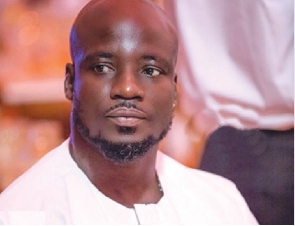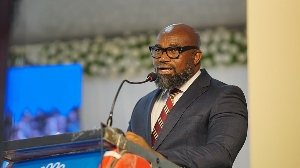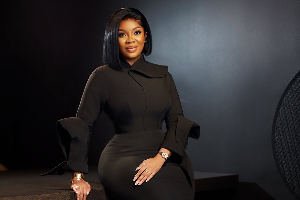- Home - News
- TWI News | TV
- Polls
- Year In Review
- News Archive
- Crime & Punishment
- Politics
- Regional
- Editorial
- Health
- Ghanaians Abroad
- Tabloid
- Africa
- Religion
- Election 2020
- Coronavirus
- News Videos | TV
- Photo Archives
- News Headlines
- Press Release
Opinions of Wednesday, 29 June 2016
Columnist: Susan Namondo Ngongi
Inequity is a choice
Around the world, millions of children do not have access to the building blocks they need to grow up healthy and strong. Immunisations, post-natal care, proper nutrition, and education – among the foundations of a productive and prosperous life – are out of reach for many.
Failure to reach those children now will fuel inter-generational cycles of disadvantage that will imperil their future, the future of their societies and the future of the world.
We have a clear choice to make: invest in accelerated progress for the children being left behind, or face the consequences of a far more divided and unfair world by 2030.
Those consequences are staggering to contemplate – at current trends. For example, by 2030, 167 million children will still be living in extreme poverty; 69 million children under the age of five will have died from mostly preventable causes and more than 60 million primary children of school age will be out of school.
Here in Ghana, we see ever-increasing levels of inequality. The wealthiest saw 40 per cent faster growth in their consumption than the poor since 2006. Yet, this inequity – the disparities between and within societies – is not inevitable for children. It is the result of choices that we make as a society and as a global community.
Narrowing the gap between rich and poor is something we can achieve. As UNICEF’s new global report shows - State of the World’s Children 2016 - there are steps we can take so that every child, even one born into the most challenging of environments, will receive the care and education he or she needs to survive and thrive. It comes down to the policies we pursue and the approach we take.
Decision makers, aid agencies and non-governmental organisations should commit to a set of principles that promote equity. These principles start with using data to identify and track children who are making the least progress, and then steer investments first to these children to help them catch up.
Equity is not a zero-sum game. Every child should advance, but increasing investment in those who start out at the greatest disadvantage is the best way to ensure that each child has a fair shot at reaching the same level. This is a proven formula to guide investment; a 2010 study by UNICEF on health equity demonstrated that an equity-focused approach can actually accelerate progress toward global health goals and can be cost-effective as well.
At the same time, it is critical that stakeholders take an integrated approach. This means addressing the overlapping deprivations and challenges children face. When a child has no access to proper healthcare, for instance, his or her ability to study will likely be diminished.
One of the most important lessons from the past 15 years is that approaches that focus on overall progress do not eliminate the disparities that put the poorest children at the highest risk. As a result, if we do not make a concerted effort to help the most disadvantaged, they are likely to fall behind as those more fortunate continue to advance.
In a few short months, the world will mark the first anniversary of the agreement of the Sustainable Development Goals. Last September, more than 200 leaders gathered at the United Nations in New York and agreed to an historic set of goals that aim to make significant advancements when it comes to health, education, poverty-reduction, and sustainability by 2030.
As governments around the world – particularly Ghana’s through President Mahama’s leading role – consider how best to meet their commitments to the goals, it is imperative that they take an equity approach.
Equity has gained new urgency. Climate change is exacerbating the risks to the most disadvantaged children. Globally, more than half a billion children live in zones where the occurrence of flooding is extremely high and nearly 160 million live in zones where the severity of drought is high or extremely high. At the same time, regional conflict and violence, and the ongoing refugee crisis, are putting more and more children in extreme danger and depriving them of what they need to thrive.
Within this challenging landscape, we must remember that inequity is not inevitable. If we choose to take the right approach, disadvantaged children can have a chance to realise their dreams of a better life.










